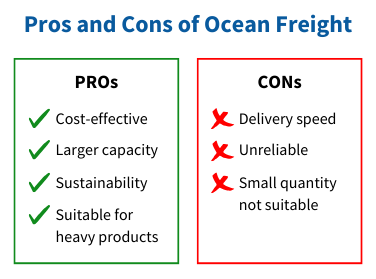Air Freight
Air Cargo vs. Air Freight
When discussing air logistics, it’s crucial to differentiate between air cargo and air freight. Air cargo generally refers to the goods themselves, while air freight encompasses the entire process of transporting these goods by air.
The versatility of air freight allows for the shipment of a wide range of goods. While it’s commonly used for high-value and time-sensitive items like electronics, pharmaceuticals, and perishable goods, advancements in technology and logistics have expanded the scope to include various industries.
While these terms are often used interchangeably, it’s essential to understand the nuances. “Cargo” specifically refers to the goods being transported, while “freight” includes the charges associated with the transportation of those goods.
It’s crucial to distinguish between air freight and an air flight. Air freight refers to the entire process of shipping goods by air, including the logistics and transportation. In contrast, an air flight is simply the journey of the aircraft itself.
“Cargo freight” refers to the goods being transported, emphasizing the nature of the cargo. On the other hand, “shipment” encompasses the entire load of goods being transported, emphasizing the collective aspect of the cargo.
In general, ocean freight is more cost-effective than air freight, especially for large and heavy shipments. However, this cost savings comes with the trade-off of longer transit times.
Several factors contribute to the higher cost of air freight. Common airfreight pricing is often based on weight or volume. Charges include fuel costs, handling fees, security measures, and the expedited nature of air transport.
The best choice of air freight depends on the specific requirements of the shipment. For urgent or smaller items, express air freight services might be the optimal solution.
Goods that are high in value and time-sensitive, such as electronics or pharmaceuticals, tend to be more profitable when shipped by air.
Air freight services offer various options, including express air freight, next-flight-out services for urgency, and deferred options for cost-effective solutions with longer timelines.
For time-sensitive or high-value goods, the premium cost of air freight is often justified by the speed and reliability of delivery.
Yes, air freight can be arranged as FOB (Free on Board), where the seller is responsible for all costs until the goods are loaded onto the aircraft.
The process involves transporting goods to an airport, loading them onto an aircraft, flying to the destination airport, and finally, delivering the goods to the recipient.
Air freight costs are typically calculated based on the weight or volume of the goods being shipped. Additional charges may include handling fees, security measures, and fuel costs.

Sea Freight
What is Sea Freight?
Sea freight involves the transportation of goods by sea, typically in containers loaded onto cargo ships.
While FedEx and UPS are more known for air services, they also provide sea freight services for international shipping, extending their logistics capabilities.
A common example of sea freight is the shipment of container loads of manufactured goods from manufacturing hubs like China to consumer markets such as the United States.
While “cargo” refers to goods in general, “sea freight” specifically pertains to goods transported by sea, emphasizing the mode of transportation.
Risks associated with sea freight include potential damage to goods, theft, and delays due to weather or port congestion.
Reliability in sea freight varies, influenced by factors such as the chosen shipping route, the carrier’s reputation, and unpredictable weather conditions.
Ocean freight costs are typically negotiated between the buyer and the seller. Payment terms may involve prepayment by either party.
Sea freight takes longer than air freight. Transit times can range from several weeks to months, depending on the distance and specific destination.
Sea freight costs are calculated based on the volume of goods or the space required in a shipping container. Charges may include port fees, handling costs, and customs clearance.

When it comes to strategic sourcing and finding a reliable sourcing agency or product sourcing company in China, BLND-Sourcing is your ideal partner. Offering top-notch sourcing agents and a comprehensive sourcing service, BLND-Sourcing ensures a smooth process from product selection to transportation. With our expertise, you have nothing to manage or worry about – leave your sourcing needs in our capable hands.
For all your China sourcing agent requirements and seamless transportation solutions, trust BLND-Sourcing to be your guiding force.
